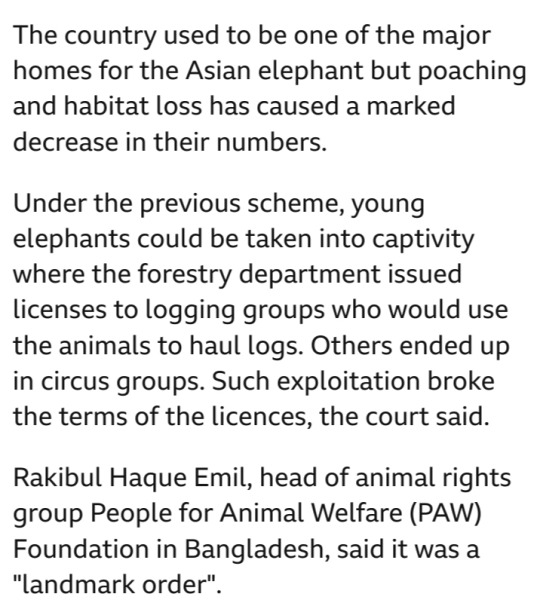#critically endangered
Text
RARE BIRD SEEN FOR FIRST TIME IN 140 YEARS
#ra speaks#black naped pheasant pigeon#birds#bird#critically endangered#!!!! this is the first time this bird has EVER been captured on camera#absolutely insane and amazing#decided to check Twitter for likely one of the last times and this was so exciting to see#edit: everyone saying ‘welcome back!’ and crying in the tags I see you I love you we love birds that make a come back
33K notes
·
View notes
Text


What are these creatures? They are big-headed turtles (Platysternon megacephalum), which are native to Southeast Asia and China. Weird and wonderful, yes?
944 notes
·
View notes
Text

You may look at this picture and think it’s an Axolotl. But it’s not. It’s a Lake Pátzcuaro salamander also known as an achoque. These little guys need more attention because they are also critically endangered. They also live in Mexico in lake Pátzcuaro.

171 notes
·
View notes
Text

🎊 Congratulations! 🎊
A creature has been borned
223 notes
·
View notes
Text
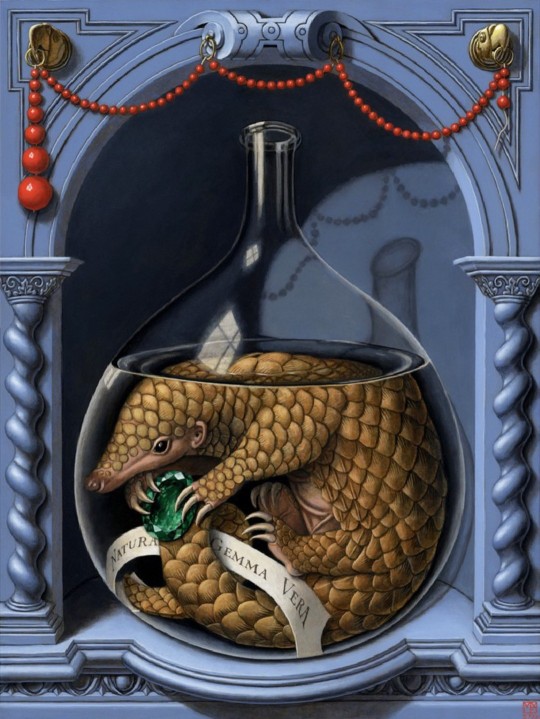
Madeline von Foerster (American, 1973) - Natura Gemma Vera (Nature is the True Gem) (2023)
#madeline von foerster#artist is involved in pangolin rescue and conservation#pangolin#critically endangered
458 notes
·
View notes
Text
Great news for monotreme lovers!!!

The Sir David Attenborough's Long-Beaked Echidna (Zaglossus attenboroughi) has been sighted for the first time since 1961!
Also known as the Cyclops Long-Beaked Echidna, this nocturnal critter was first described by Western scientists in 1961 during the Dutch colonial era of what was then known as Dutch New Guinea. It was only described from a fragmentary preserved specimen (pictured below) and was of course named after the famous naturalist Sir David Attenborough. However, I do want to point out that, as is the case with many newly discovered species, it was known to the native people of this region way before this and was traditionally hunted for both food and for ceremonial peace offerings. However, according to my research since the species was classified as Critically Endangered, the native villagers were very enthusiastic about its conservation and agreed not to hunt them in order to help preserve the species.

Z. attenboroughi is native to the Cyclops Mountain Chain in northern Indonesian New Guinea and feeds mostly on worms, ants, termites, and other invertebrates by using their long beaks to forage through the soil and creating distinct “nose pokes”. For a long time, these “nose pokes” were the only sign scientists had that this species hadn’t gone extinct. The last unconfirmed sighting by locals was in 2005, though some tracks and burrows that were thought to belong to the species were discovered in 2007.
Now, over 60 years after it was initially described, an expedition of scientists from Oxford University to the Cyclops Mountains has resulted in this elusive monotreme being videotaped by a game trail camera.

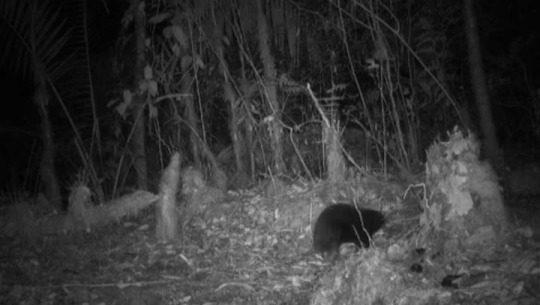
Photo credit: Cyclops Expedition
Attenborough’s Long-Beaked Echidna might somewhat resemble hedgehogs in appearance and behavior, however, they are one of only five species of egg-laying mammals known as monotremes! The other four species are the Short-Beaked Echidna, Western Long-Beaked Echidna, Eastern Long-Beaked Echidna, and the Platypus. The Attenborough’s Long-Beaked Echidna is the smallest species of Echidna and is apparently more closely related to the Short-Beaked Echidna than it is to the other two species of Long-Beakeds. It also possesses a more reddish coloration. All species of monotremes are known for, as I mentioned before, laying eggs instead of giving live birth like placental mammals and marsupials do. Monotremes also lack nipples and instead produce milk for their young out of modified sweat glands like how the early ancestors of all mammals did. Male Platypi/Platypuses (both terms are correct) and Echidnas also have ankle spurs which are highly venomous in the case of the Platypus, but Echidnas seem to have lost their venom and instead use them to help dig. Apparently, they also seasonally secrete a creamy substance their spurs but this, while kinda gross, is harmless.
While the rediscovery of this species is super exciting, we mustn’t forget that Attenborough’s Long-Beaked Echidna is considered Critically Endangered and is still at risk of extinction. Habitat loss and poaching seem to be the biggest threats to this species and many other unique creatures endemic to Oceania.
#monotreme#echidna#new discoveries#critically endangered#science#infodump#animals#endangered species#new guinea#animal news
178 notes
·
View notes
Text
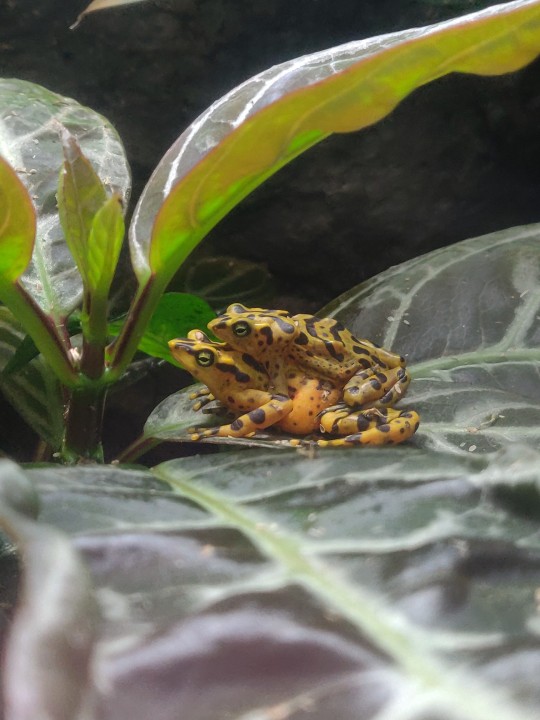
Panamanian Golden Frog, Atelopus zeteki
Endemic to Panama. Extinct in the wild.
#frog#frogs#endangered animals#critically endangered#mine#endangered#animals#wildlife#nature#amphibians#amphibian#ecology#central america#panama#panama golden frog#naturalist#zoologist#ecologist#nature photography#photography#herpetology#herpetofauna#herping#zoo#zoos#zoo animals#froggie#froggy#froggo#froggggg
84 notes
·
View notes
Photo

Axolotl
#axolotl#neotenic salamander#ambystoma mexicanum#critically endangered#going extinct in the wild#apparently pronounced ah show lot#looks like this was a month early for#amphibiuary2023
420 notes
·
View notes
Text
🦈 Daily Shark Fact: 🦈
The Ganges Shark (critically endangered), is one of six species of river sharks found in the world. This species is endemic to India. It inhabits the River Hooghly in West Bengal, as well as the rivers Ganges, Brahmaputra, and Mahanadi. While other river sharks are also known to inhabit saltwater, the Ganges shark is only found in rivers and possibly estuaries, with no confirmed records fmof being spotted in oceans or seas.


#ganges shark#critically endangered#rare shark#shark blog#advocacy for sharks#respect the locals#shark awareness#save the sharks#sharks#cartilaginous fish#shark post#shark facts#daily shark facts#interesting shark facts#facts about sharks#sharks of tumblr#shark tumblr#the more you know#fyp#just a girl who loves sharks#i love sharks#sharks are important#sharks are cool#sharks are friends not foes#river shark
97 notes
·
View notes
Photo

Rarest Animals In The World That Are On The Brink Of Extinction
Yangtze Finless Porpoise (Neophocaena Asiaeorientalis)
Wikimedia Commons
#wikimedia commons#photographer#yangtze finless porpoise#neophocaena asiaeorientalis#marine#porpoise#animal#nature#extinction#critically endangered
96 notes
·
View notes
Video
Amur leopards
The Amur leopard is a leopard subspecies native to the Primorye region of southeastern Russia and northern China. It is listed as Critically Endangered on the IUCN Red List, as in 2007, only 19–26 wild leopards were estimated to survive in southeastern Russia and northeastern China. It is considered one of the rarest cats on Earth.
As of 2015, fewer than 60 individuals were estimated to survive in Russia and China. Camera-trapping surveys conducted between 2014 and 2015 revealed 92 individuals in an 8,398 km2 (3,242 sq mi) large transboundary area along the Russian-Chinese border. In 2019, it was reported that the population was about 90 leopards. In 2021, it was reported the population was about 110 individuals.
@itseriksen
373 notes
·
View notes
Text
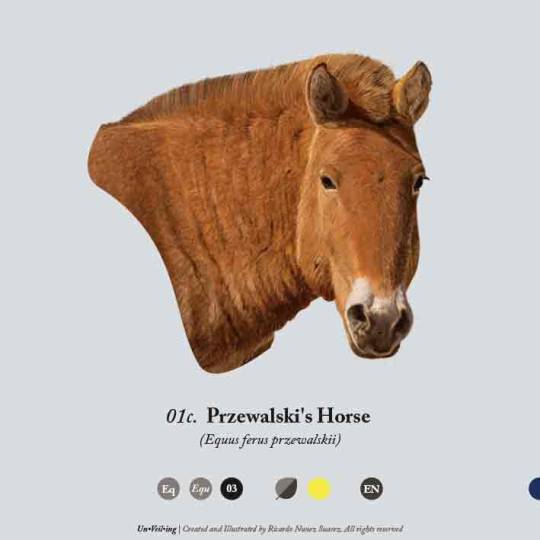
Przewalski's Horse
Equus ferus przewalskii
Family: Equidae
Genus: Equus
Subspecies: 03
Feed: Herbivorous
Habitat: Temperate Steppe
Status and Conservation: Critically Endangered
This is the only remaining species of wild horse. The other two wild horse species have already become extinct. One of them is the Tarpan (which was mentioned in a previous post), and the other is the European Wild Horse, which went extinct during the Pleistocene era. The other horses that roam in the wild are considered feral, which means they were once domesticated horses that have reverted to a wild state.
The Przewalski Horse was also extinct in the wild at one point. However, thanks to various breeding programs and the efforts of different zoos, it has been successfully reintroduced to its natural habitat in Mongolia and China. It is still classified as Critically Endangered."
________________________________
Credits:
Handbook of The Mammals of the World. Hoofed Animals.
________________________________
Thank you for being here. Likes, reblogs, and follows are very much appreciated. See you next week with more mammals. A new family to show! Huuuuuuuuu
#przewalski's horse#horse#caballo#love horses#horse lover#wild horse#feral horse#illustration#drawing#scientific illustration#illo#wild animals#wildlife#animals#artist on tumblr#mammals#animal#critically endangered#inforgraphics
75 notes
·
View notes
Text

"Run free" (2010)
African wild ass, a critically endangered species (ancestor to domestic donkeys) I've always found to be extremely interesting. I love the background, color and compositions, but the ass itself need some work, the facial anatomy especially. I still like this picture!
#nothofagus-obliqua#2010#Fauna#critically endangered#Equidae#Equines#African willd ass#wild ass#landscappery#Biodiversity
16 notes
·
View notes
Text
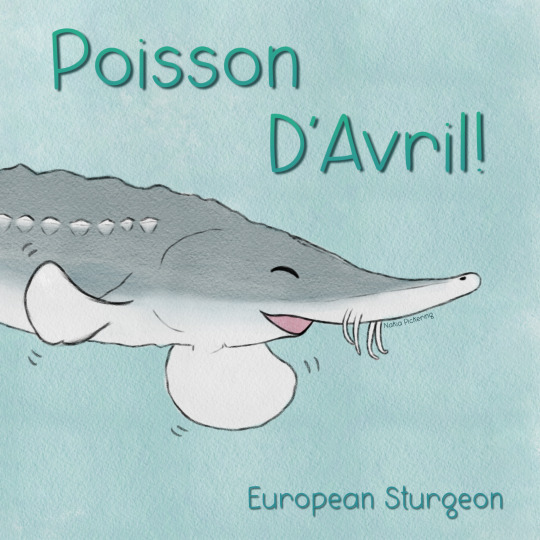
Poisson D’Avril!
It’s April Fools’ Day, and you know I can’t resist the chance to make some quirky holiday art! They call it Poisson D’Avril, or ‘April Fish’ in France. No now knows exactly why, but I won’t complain about a reason to illustrate! I chose a European Sturgeon for this piece because they’re a very important and critically endangered species. Here are some facts about them:
- They are the rarest sturgeon in the world.
- One single wild population exists in the Garonne and Dordogne rivers in France, but in former times they’ve been documented in many other places including the Atlantic, the English Channel, the Mediterranean, and the Black Sea.
- Globally 85% of sturgeon species are threatened with extinction, rendering them the most endangered species group in the world, according to IUCN.
- They are diadromous, meaning they live in fresh AND salt waters!
- They can live to be over 100 years old, grow up to 16 feet long, and weigh up to 770 pounds!
- Today sturgeons are referred to as living dinosaurs as their lineage dates back to over 200 million years ago!
#poisson d'avril#illustration#wildlife art#wildlife artist#maine illustrator#maineartist#wildlife illustration#procreate#digital art#digital watercolor#European sturgeon#sturgeon#sturgeon art#fish illustration#endangered species Art#critically endangered
88 notes
·
View notes
Text
Critically Endangered Language Introduction:
Ainu Language
アイヌ・イタㇰ

Photos provided by AMNH
Some information about the Ainu language:
It’s critically endangered, meaning there are very few native speakers left, who are also elderly, and young people are not picking up the language. Ainu doesn’t have its own original writing system, so Latin script and a modified version of Katakana are used. For this post I will be using both Latin and Katakana script. You can read more about the Ainu language and people on Wikipedia, here and here.
Example Words & Phrases ↓
Provided by Wikitravel at this link
Irankarapte
イランカラㇷ゚テ
Hello/Nice to meet you
E=iwanke ya?
エイワンケ ヤ?
How are you?
Ku=iwanke, iyairaykere
クイワンケ、イライライケレ
Fine, thank you
E=re hemanta ya?
エレ ヘマンテ ヤ?
What is your name?
K=ani anakne ______ ku=ne
カニ アナㇰネ _____ クネ
My name is ______ .
E
エ
Yes
Somo
ソモ
No
Amerika-itak
アメリカイタㇰ
English Language (literally: “America Language”)
Kunne
クンネ
Black
Retar
レタㇻ
White
Katuwa
カツ゚ワ
Grey
toy-haru
トィハル
(fresh) vegetables
nikaop
ニカオㇷ゚
(fresh) fruit

Please correct me if I made a mistake
#endangered languages#endangered language#critically endangered#critically endangered language#critically endangered languages#ainu#ainu language#dying language#endangered culture#Critically Endangered Language Introduction#Language Introduction#language preservation#historic preservation#ainu culture#ainu people#language learning#beginner language#beginner ainu
44 notes
·
View notes


